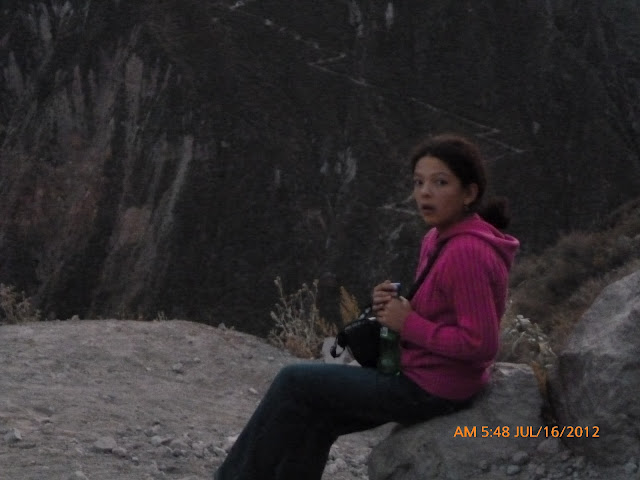 |
| Day 1. 1,200 meters down the canyon. |
 |
| Louise's Knee started to give up near the base of the hill. |
 |
 |
| By the end of the day she had both knees wrapped up and on top of her super hero donkey. We were proud of her to get as far as she did with two busted knees. |
 |
| The camp kitchen was the only warm place to be at San Juan de Chuchu. The lady at the kitchen told me that all their supplies were carried by mules from a nearby town 4 hours away. |
 |
| Day 2, along the base of the canyon |
 |
| Day 2 was the easiest of all. |
 |
| Crossing one of the many small towns along the way. |
 |
| No matter how small the town is, it will always have a church. |
 |
| Typical hat from the Cabanas people. |
 |
| The rivers flow a lot more during the rainy season |
 |
| Day 3. 9 km walking but 1,100m straight up and we were one man down. Early morning start and no breakfast. We were told it was to avoid altitude sickness. |
 |
| Madeline was having doubts on whether she was going to make it or not. |
 |
| Louise caught up to us on the way up on her ambulance mule. |
 |
| Madeline was looking a lot brighter near the top of the mountain but we still had another hour to go, she power on in pain but did not complain. |
 |
| Arriving in the town of Cabanaconde. Notice the two ladies on the left wearing different types of hats The one on the left is a Collaguan and the other is a Cabanan. |
 |
| The 3 of us with Norma our trekking guide. She was very knowledgeable. |
 |
| Postcard with a vicuna and an eagle. |
 |
| At the hot springs near the town of Chivay. The town of Chivay is one of the closest towns to the Mismi Glacier which is known as the birth place of the Amazon river. |
 |
| We could hardly walk. |
 |
| Maddy was dog tired. |
 |
 |
| Llamas near the national reserved of Salinas y Aguada Blanca. |
 |
| Fallen victim to the Canyon. Adios Aussie shoes, I guess they not made for Colca canyon conditions. |







Locaso brother que buena experiencia.
ResponderEliminarGracias Brother. el espectaculo valio la pena...ha ha ha
ResponderEliminar